Do you know how to tell if that’s coyote poop you found in your yard? Have your heard or seen coyotes in your neighborhood and need to know how to identify coyote scat?
If you find poop in your yard that doesn’t look like your dog’s feces, it might be a coyote who has or is visiting your home. This could be a problem if you have small pets a coyote might consider as prey. Or if you have small children that might handle the scat.
Related: How to deal with suburban coyotes near your home.
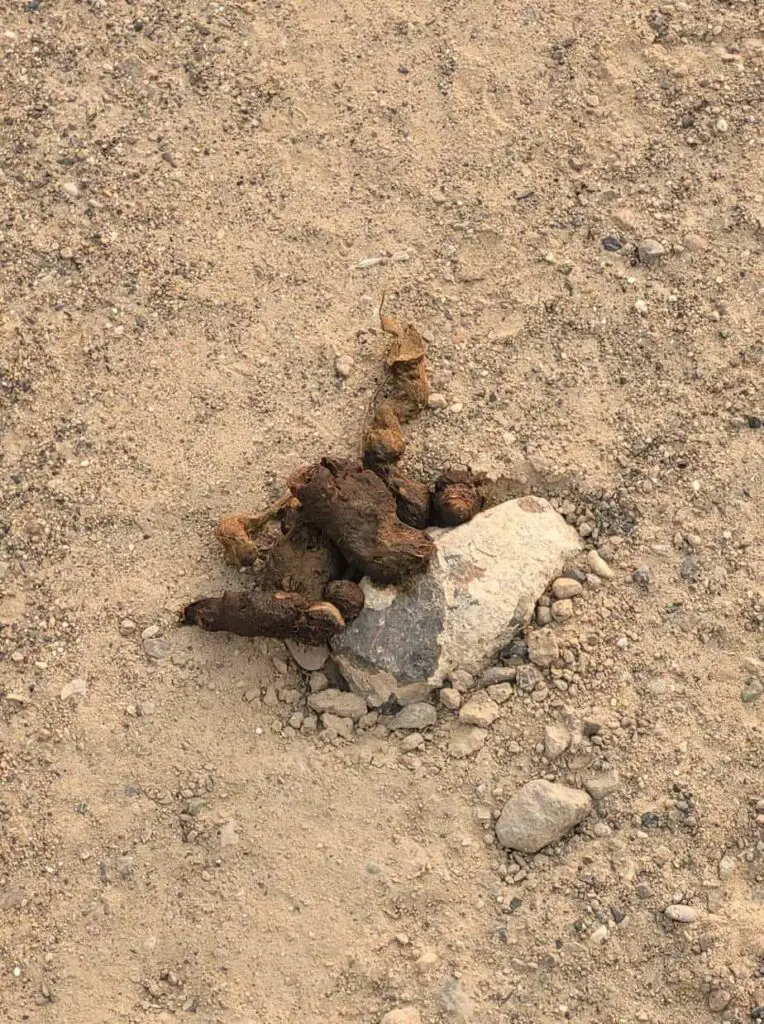
Related: The day-to-day life of a wild coyote.
What does coyote poop look like?
Scat, feces, poop, or whatever you wish to call it, is like snowflakes; no two are alike. Therefore, determining who dumped (sorry) what on the ground can be difficult. The location, a few essential characteristics, and, if you are lucky, some tracks nearby should help you identify the animal, but there is often an element of uncertainty.
Coyote poop averages four inches in length and one inch in diameter. Tapered on both ends, it looks like a rope made of hair and bones. Coyote poop is typically dark in the winter and light in the summer. Coyote scat grays as it ages. It’s harder than domestic dog scat and has little to no odor.
The coyote poop in your yard will probably fall somewhere between 3/4 to 1-1/2 inches in diameter and 3 to 5 inches long. The size will depend and usually indicates the size coyote depositing the scat.
Coyotes will often help you locate their poop by making their scat deposit on one or more topographical features. This is how coyote’s let other coyotes know where their territorial boundaries begin and end. Expect to find coyote poop in the middle of trails and along the boundaries of their territories.
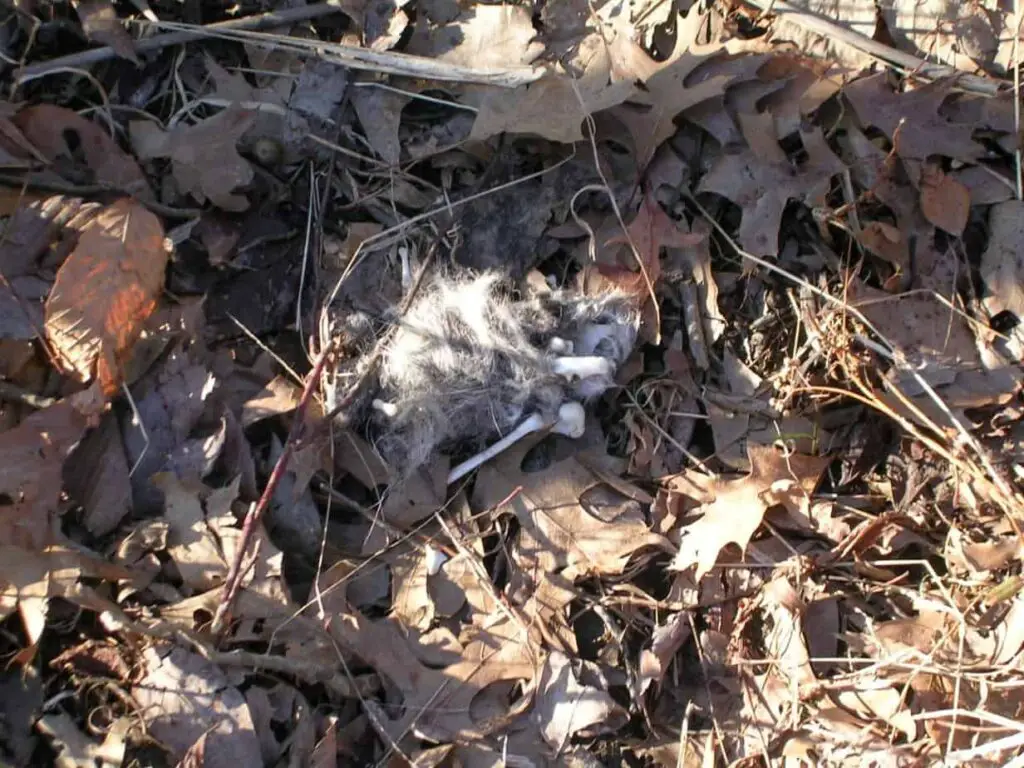
Confirming coyote poop with coyote prints.
Scat, feces, poop, or whatever you wish to call it, is like snowflakes; no two are alike. Therefore, trying to determine who dumped (sorry) what on the ground can be difficult. The location, a few essential characteristics, and, if you are lucky, some tracks nearby should help you identify the animal, but there is often an element of uncertainty.
Coyote paw prints.
Coyote paw prints are approximately 2 1/8 – 3 1/16 inches long by 1 5/8 – 2.5 inches wide. As with wolves, foxes, and bobcats, the rear paws are slightly smaller that the front ones.
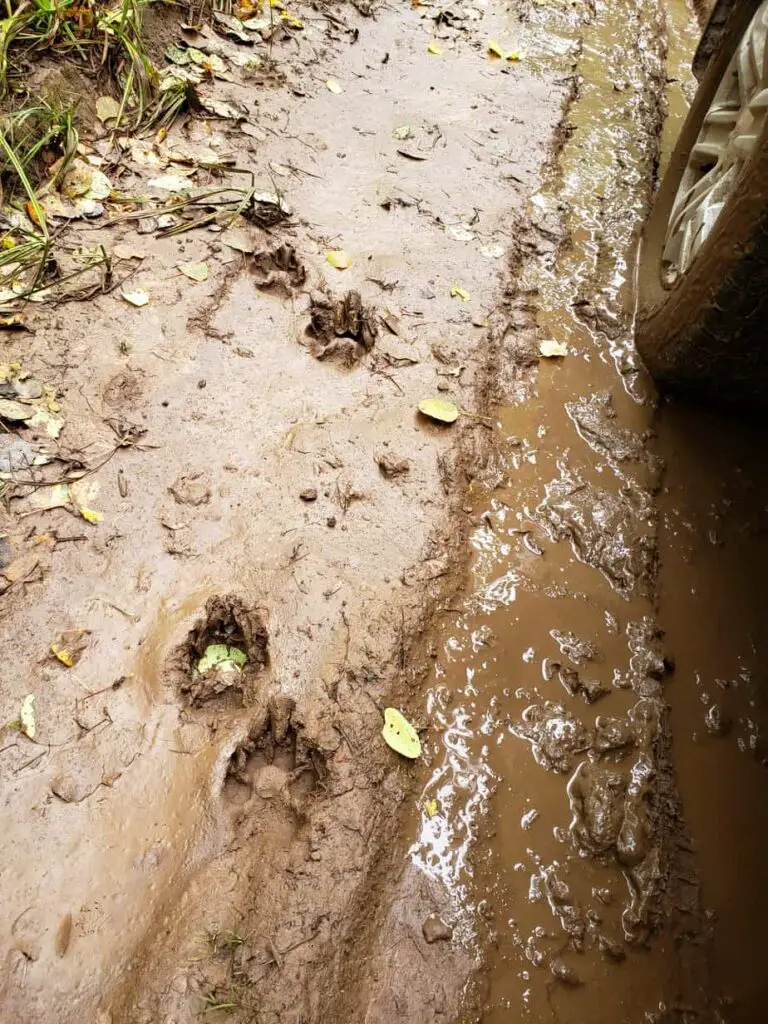
How to tell dog prints from coyote paw prints.
New coyote hunters often find a set of prints and find themselves wondering if a dog or a coyote made them.
Thankfully, there is one surefire way to tell if a track was made by a dog or by a coyote: Can you draw an X between the negative spaces?
Here’s what I mean:
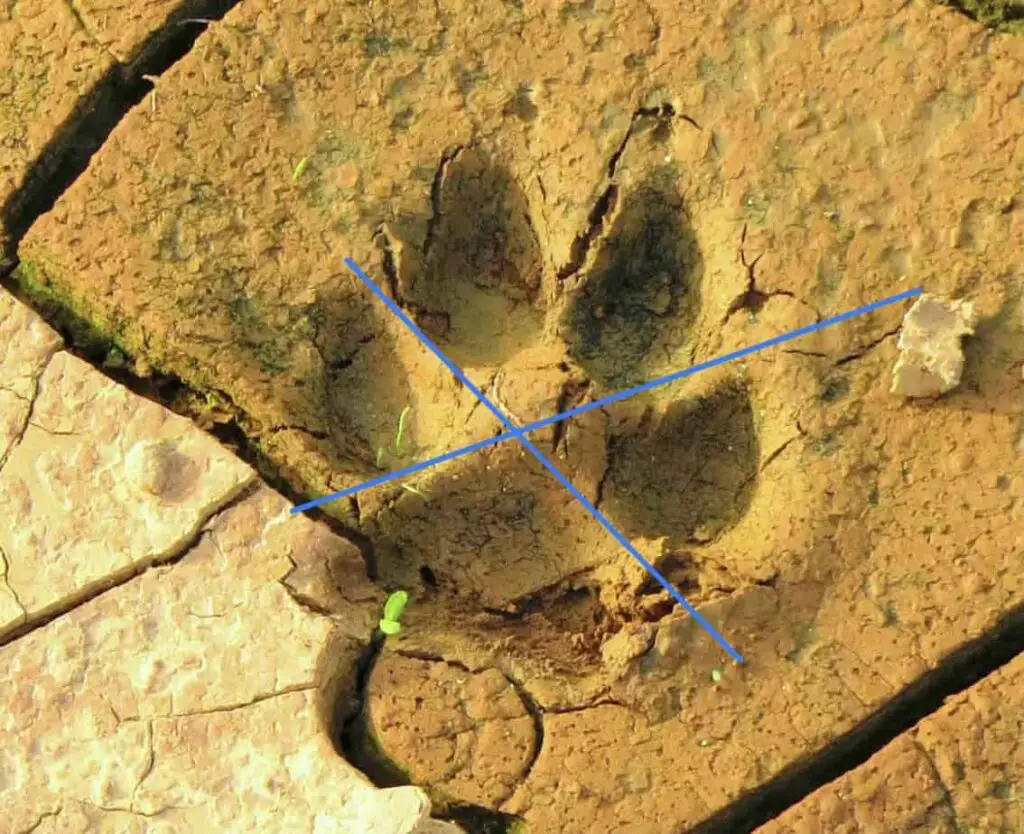
Now that you have used any nearby coyote tracks to determine if a coyote has walked in your yard, you can safely assume the feces you found was coyote poop.
If you are lucky, you might something like this:
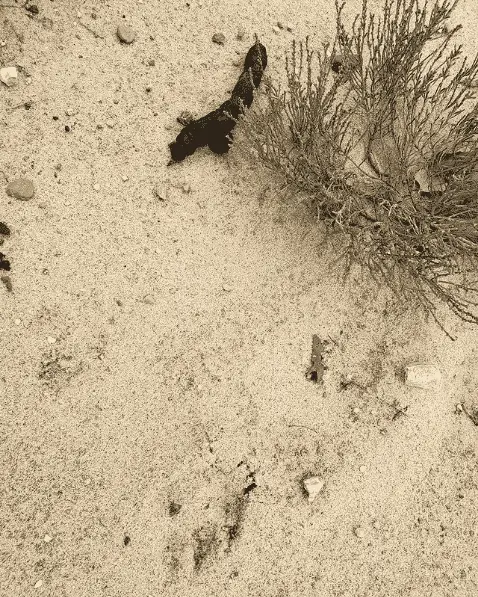
Related: How to identify and age coyote poop and tracks.
The hazards of handling coyote poop.
Coyote scat may present a health hazard to you and your pet. To avoid transmitting any diseases in the coyote poop you find in your yard, quickly and safely remove it without coming into contact with it yourself. Wear gloves, collect the waste in a plastic bag, and properly dispose of it.
Here’s a list of some of the known hazards found in coyote scat deposits.
- Coyote Tapeworm. According to a Canada Communicable Disease report, “The Echinococcus species, including E. multilocularis and E. canadensis, are tapeworms that primarily infect canids such as dogs, foxes and coyotes, but which can also infect humans. In humans, E. multilocularis can cause alveolar echinococcosis; a serious condition that mimics metastatic malignancy and has a poor prognosis.”
- Roundworms. Roundworms are parasites that can sometimes cause infections. Humans suffering from roundworms often get bouts of diarrhea and fever.
- Hook Worms. According to the CDC, “People can be infected by larvae of animal hookworms, usually dog and cat hookworms. The most common result of animal hookworm infection is a skin condition called cutaneous larva migrans.”
What to when there is coyote poop in your yard.
First of all, never try to keep a coyote as a pet!
If you live in the suburbs you are limited to defensive tactics only. There are two stages of dealing with coyotes; making the neighborhood unpleasant to live in and ridding them from near your home.
Keeping coyotes out of the neigbor hood.
If you are in a new development, early detection and action of coyotes is critical. Probably the cheapest, most reliable, and easiest to use night vision equipment I have ever bought are these night vision binoculars.
Once you have detected a coyote, make it as uncomfortable as possible by hazing it. Make a lot of loud noise (yell, use an air horn, blow a whistle). Throw rocks or soda cans filled with pennies or bolts at it. Hit it with pepper spray or blast from your garden hose if near enough. Patrol your yard and check for dens under sheds or garages. If you find a den, report it to the authorities and begin hazing from a safe distance away. An appropriately hazed coyote will not move into your area.
Half-hearted hazing only encourages coyotes. While hazing, ensure the coyote can see you and recognize that humans are a threat. And always continue to haze until the coyote flees—continuing your approach until it retreats.
How to handle suburban coyotes who live near your home.
If suburban coyotes are already settled near your home, you still have a few actions you can take.
Never feed coyotes. Coyotes who are fed by humans quickly lose their fear of humans. You should also actively discourage your neighbors from deliberately or accidentally feeding coyotes. Don’t leave pet food out, and secure your trash cans.
Fence in your yard. Installing an 8’ high fence should keep coyotes from entering your yard and provide a safe space for your family and pets. Keep the area near your fence cleared of obstacles, or the coyote will simply use them as a step ladder to gain entry.
Report aggressive or strange-acting coyotes. If a coyote ignores your hazing attempts or becomes openly aggressive to you, report it immediately. You may have to make a few detailed complaints to get anyone to take action but do it-and encourage your neighbors to do it as well.
Keep your pets on a leash. Don’t let your cats or dogs roam around unattended. Smaller pets are nothing more than prey to an adult coyote. Larger dogs will be considered trespassers by suburban coyotes and attacked.
Carry a walking stick. The average coyote weighs about 30-35 pounds. If you stand your ground and do not run from it, it is highly likely to back down. If it attacks, a few good kicks to the chest or ribs can be fatal to it. A solid blow from a walking stick to the top of a coyote’s skull often knocks it out for several minutes or kills it outright. Regardless of the outcome, seek medical attention immediately after the attack is over.
Dealing with rural coyotes leaving coyote poop in your yard.
When you live far enough away from other residences and people and can legally shoot a coyote, do it.
If you are new to hunting coyotes, read my article Coyote Hunting: Tips and Tactics for New Hunters.
Hunting them at night is the most productive. Here’s my article on how to do it Hunting Coyotes at Night: 8 Proven Strategies for Success.
I’m sorry if killing coyotes bothers you, but where I live will actually hunt even an English Mastiff puppy. So we are constantly on guard and armed.
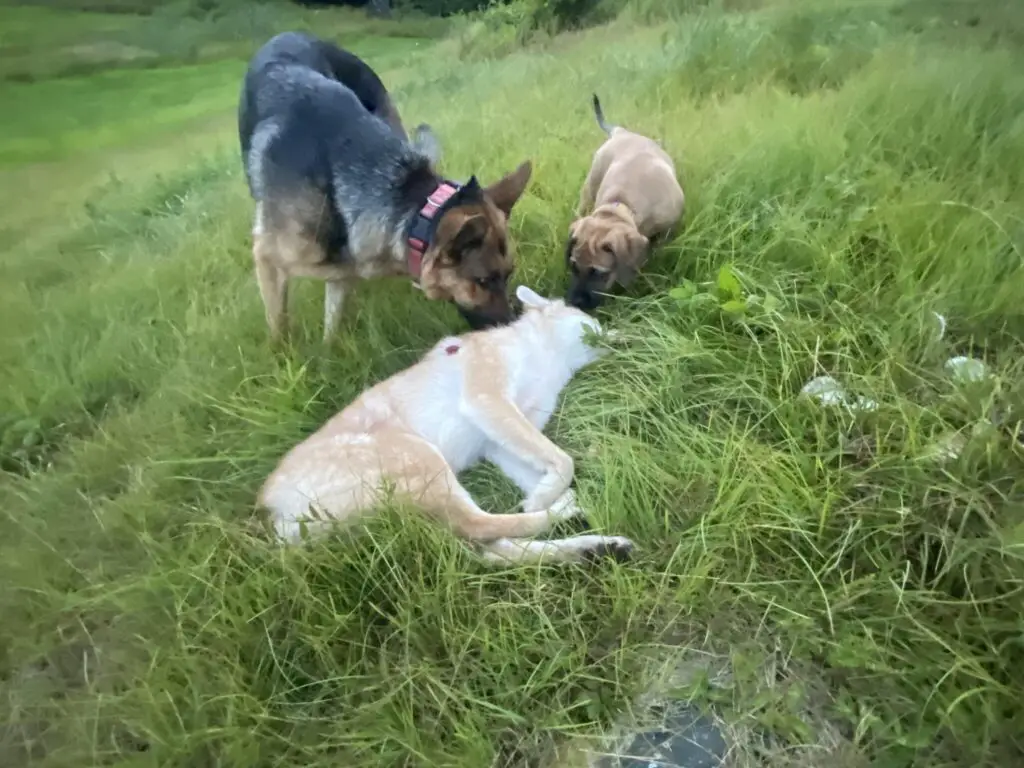
Coyote poop in your yard may signal other problems.
There are hazards to you and your pet both from the coyote scat itself and the presence of nearby coyotes. Use the steps above to reduce or eliminate these hazards. Contact your local wildlife officer if your efforts fail, or a coyote acts aggressively.


